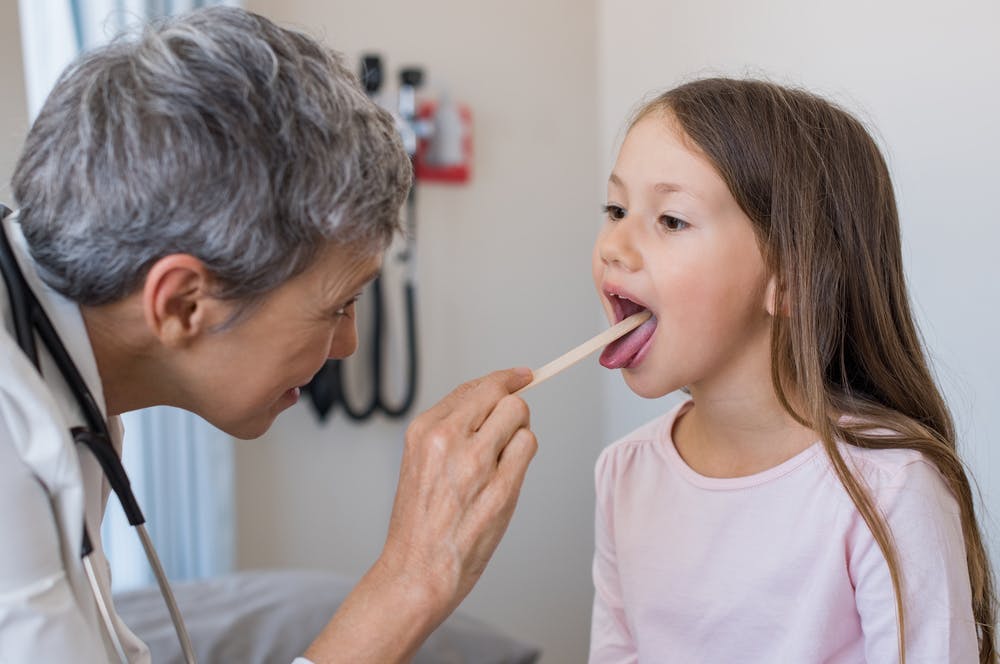Common viruses in children: Infections kids pick up at school
While many parents and schools have been focused on preventing COVID-19 outbreaks in the last few years, it’s important to remember that there are many viruses at school that also pose a risk to children’s health. Here’s what parents need to know about the seven common infections that kids can pick up at school.
1. Conjunctivitis (Pink Eye)
Conjunctivitis, also called pink eye, is a common infection many kids pick up at daycare centers and schools. This condition happens when the conjunctiva (the clear membrane that lines the eyeball and inner eyelids) becomes infected or inflamed.
While allergies and bacteria can cause conjunctivitis, viral conjunctivitis is the most common viral infection in kids, accounting for 80% of cases.
Because it is highly contagious, conjunctivitis in schools can spread quickly from student to student. Therefore, it is important that children wash their hands frequently and that hard surfaces, including desks, doorknobs, sink handles, and plastic toys, are frequently disinfected.
2. Colds
More than 200 viruses can cause the infection we know as the “common cold.” Symptoms include a low-grade fever, nasal congestion, fatigue, headaches, watery eyes, scratchy throat and cough.
Colds are a common virus in children, infecting them more often than adults. While the average adult gets 2-4 colds a year, school-aged children average 6-8 colds per year. Children younger than 2 can get as many as 10 colds a year!
The viruses that cause the common cold can be spread through respiratory droplets or by direct contact with viral particles. To decrease the transmission of these viruses, caregivers and teachers should implement infection prevention in schools. These protocols should include disinfecting hard surfaces, encouraging kids to wash their hands well, avoiding touching their faces and spending time outdoors as much as possible.
3. Strep throat
Strep throat is a bacterial infection caused by the Group A strain of streptococcus. The symptoms of strep throat include a fever, exudate (“white spots”) on the tonsils, swollen lymph nodes in the neck, and a sore throat.
Strep throat is most common in children ages 5-15. It rarely affects children under 3 years of age and rarely causes a runny nose or a cough.
If your child has symptoms of strep, it’s important to seek prompt medical attention since strep can lead to heart and kidney issues if left untreated.
4. Gastroenteritis (Stomach Flu)
Gastroenteritis, commonly called the “stomach flu,” can cause abdominal cramping, nausea, vomiting, diarrhea, and a fever. It’s most commonly caused by viruses that infect and inflame the gastrointestinal (GI) tract.
Since gastroenteritis is a highly contagious viral infection in kids, it’s important for children to frequently wash their hands, especially after going to the bathroom and before eating. And anyone with gastroenteritis symptoms needs to stay home until their symptoms have resolved.
While most cases of viral gastroenteritis resolve on their own within 72 hours, it’s important to note that children with prolonged symptoms, abdominal pain, a high fever, or signs of dehydration require urgent medical attention.
5. Influenza (The Flu)
More than 100 strains of influenza can cause the infection we call “the flu.” Rates of influenza in the U.S. typically are highest from November through March, and as many as 5% of children are hospitalized with flu-related complications every year.
Flu shots are approved for children ages 6 months and up and are one of the most effective ways to prevent kids from getting ill with the flu.
If your child does develop symptoms of influenza, including fever, headache, vomiting or diarrhea, body aches, and fatigue, they should stay home until they’re symptom-free.
Children with severe, prolonged symptoms or underlying health conditions should be evaluated by a healthcare provider to prevent serious complications.
6. Hand, Foot and Mouth Disease (HFMD)
Hand, Foot, and Mouth Disease (HFMD) is a common virus in children, that typically infects kids under the age of 5, although it can infect anyone at any age. The main symptoms of HFMD are fever, sore throat, and sores on the mouth, hands, and feet. Symptoms are usually mild and resolve on their own in 7 to 10 days.
HFMD is highly contagious and can spread easily in daycare or school settings. Infection prevention in schools, such as cleaning surfaces and hand washing, is essential for stopping the spread of HFMD.
7. Respiratory Syncytial Virus (RSV)
Respiratory Syncytial Virus (RSV) is another common viral infection in kids that causes respiratory symptoms similar to the common cold. Most children will have been infected with RSV at least once before they are two years old.
Typically, symptoms are mild and can be treated with at-home remedies, but RSV can be more severe in babies under 12 months or those who are immune compromised.
While it is not a common viral infection in kids, if you're in the Northwest, a recent measles outbreak has caused concern from public health authorities. To keep staff and students safe, school districts are requiring proof of immunization, which involves a titer test for measles.
For help with common back-to-school infections, visit one of your nearby urgent care locations. Walk in or save your spot online!
References:
Written by Sarah Thebarge, Physician Assistant on August 28th 2024.


